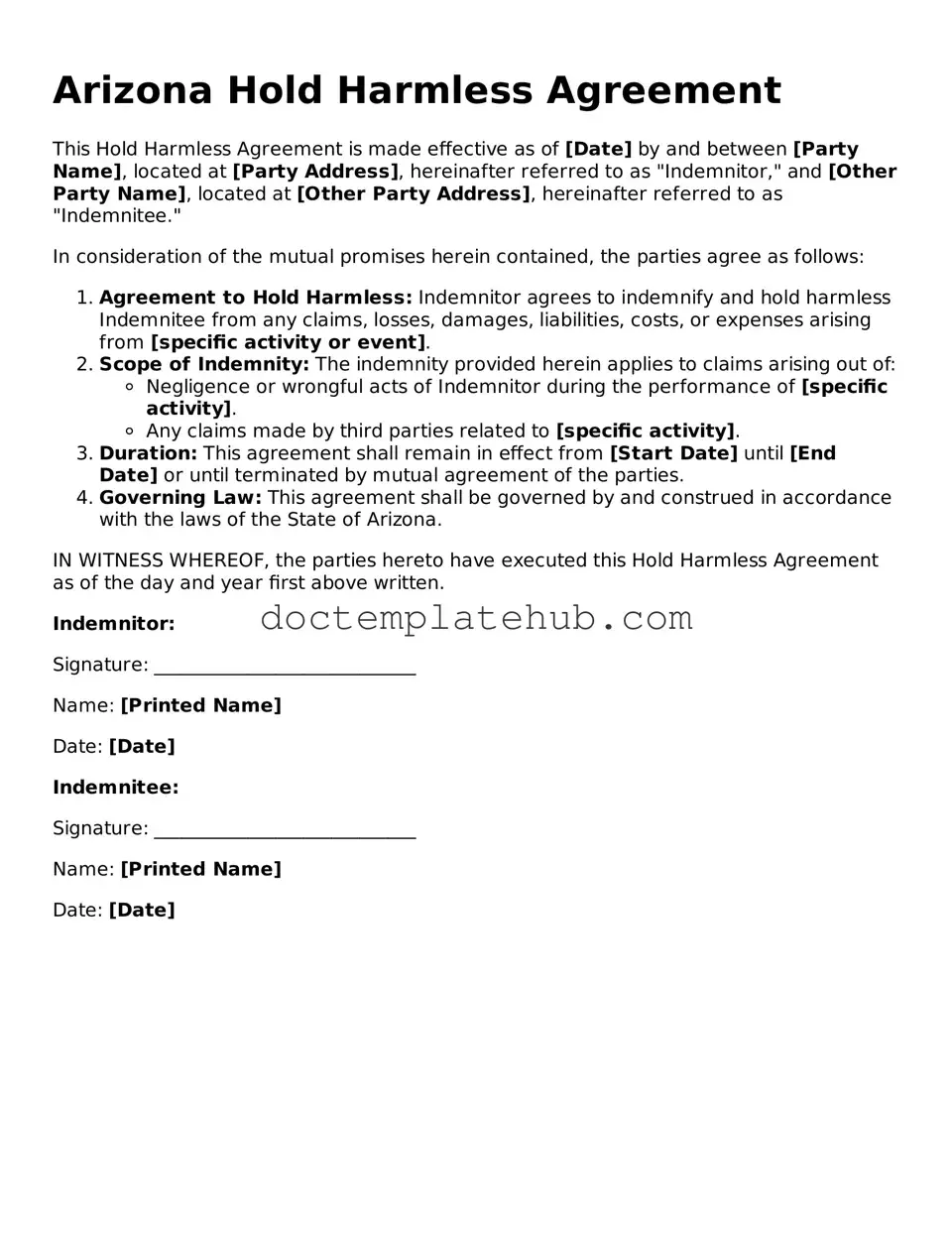The first document that shares similarities with the Arizona Hold Harmless Agreement is the Waiver of Liability. This document protects one party from being held responsible for any injuries or damages that may occur during an event or activity. Like the Hold Harmless Agreement, it requires participants to acknowledge the risks involved and agree not to pursue legal action against the party organizing the event. Both documents aim to limit liability and ensure that individuals understand their responsibilities when participating in certain activities.
Another related document is the Indemnity Agreement. This agreement often involves two parties, where one party agrees to compensate the other for any losses or damages incurred. Similar to the Hold Harmless Agreement, it is designed to protect one party from financial burdens resulting from the actions of another. Both agreements emphasize the importance of understanding the risks and potential consequences of engaging in specific activities or transactions.
The Release of Liability form also bears resemblance to the Arizona Hold Harmless Agreement. This document is used to release one party from any future claims related to injuries or damages that may arise from a particular event or activity. Like the Hold Harmless Agreement, it requires individuals to acknowledge the inherent risks involved and to agree not to hold the other party responsible. Both documents serve to protect organizers and facilitators from legal claims while ensuring participants are aware of their own responsibilities.
The Consent to Participate form is another document that aligns with the principles of the Hold Harmless Agreement. This form is often used in sports or recreational activities to inform participants of the risks involved. By signing, individuals give their consent to participate, acknowledging that they understand the potential dangers. Both documents emphasize informed consent and the understanding of risks, thereby reducing the likelihood of legal disputes arising from accidents or injuries.
The Liability Insurance Waiver is similar as well. This document is often required by organizations that provide services or host events. It asks participants to waive their right to claim damages in exchange for participation. Just like the Hold Harmless Agreement, it aims to protect the service provider from financial responsibility in the event of an accident. Both documents emphasize the importance of risk awareness and the acceptance of personal responsibility.
Lastly, the Participant Agreement shares common ground with the Hold Harmless Agreement. This document outlines the terms and conditions of participation in an event or program. It often includes clauses that limit liability for the organizers. Both documents require participants to acknowledge their understanding of the risks involved and agree to certain terms, reinforcing the idea that individuals must take responsibility for their actions while participating in various activities.
